More than 300 turtle nests observed on Bay Area beaches in last 200 days

Clearwater Marine Aquarium works to protect sea turtle hatchlings
Researchers at Clearwater Marine Aquarium said the 2022 sea turtle nesting period was a great one on beaches near Tampa Bay.?
CLEARWATER, Fla. - Researchers at Clearwater Marine Aquarium said the 2022 sea turtle nesting period was a great one on beaches near Tampa Bay.
Biologists observed more than 300 sea turtle nests during a 200-day period, along 21 miles of beaches in Pinellas County, the aquarium said. CMA said loggerhead sea turtle nests are the most common in the area.
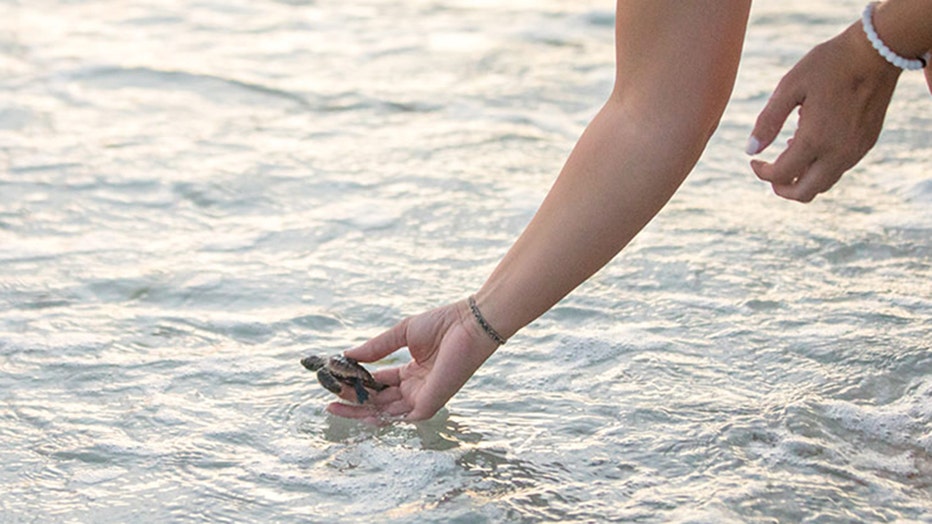
Loggerhead sea turtle hatchlings released by Clearwater Marine Aquarium (Courtesy CMA)
In 2020, there were about 220 nests. Last year, there were about 280. CMA said it's a good sign to see the number of observed nests rising.
However, the turtles still need protection from manmade hazards. Nearly 500 turtle hatchlings had to be treated at the Clearwater Marine Aquarium this year. Almost 400 of the treated hatchlings were rehabilitated and released.
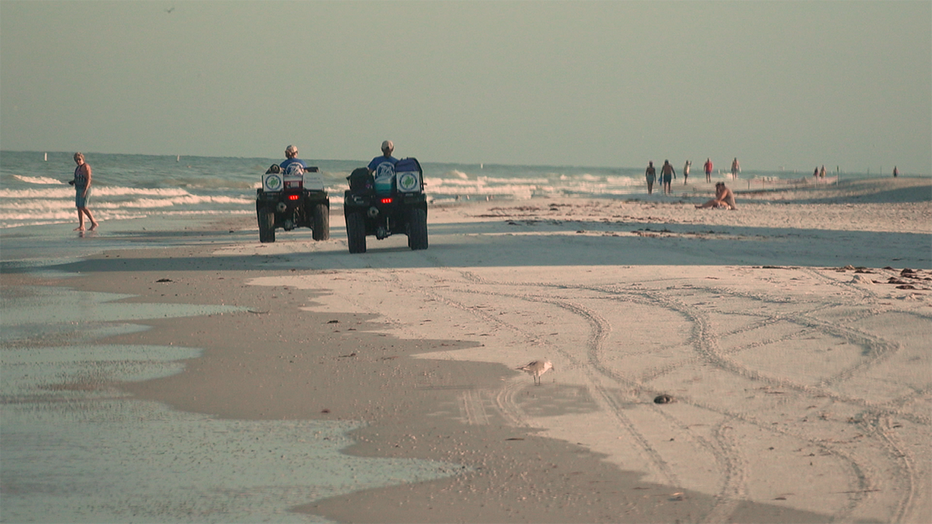
Turtle watchers patrol beaches of Pinellas County (Courtesy
CMA pointed out that Pinellas County is one of the state's most densely populated counties. Lots of people means lots of artificial lighting along beaches. Artificial light confuses hatchlings, often leading to death or injury.
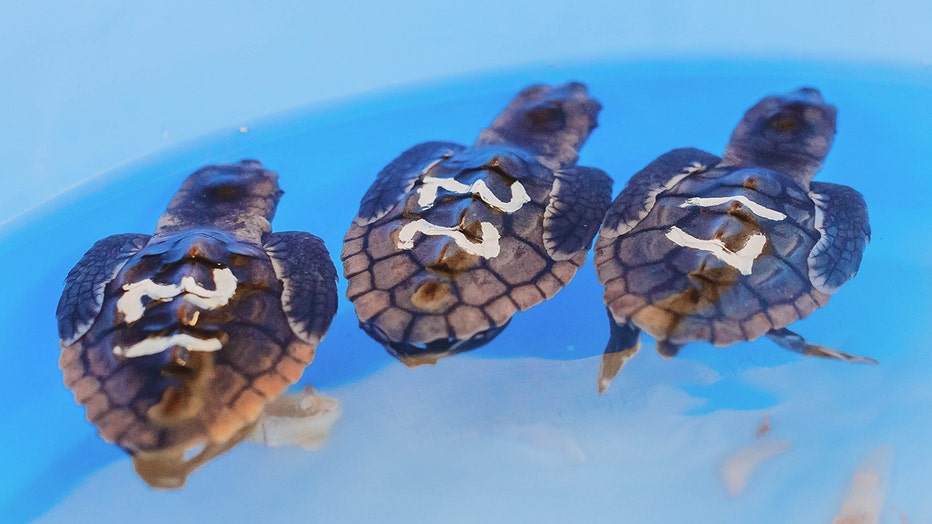
Loggerhead sea turtle hatchlings rescued by Clearwater Marine Aquarium (Courtesy CMA)
"To see these baby turtles that are only a few inches long waste their energy and to see these precious little things go the wrong way thinking they’re making it towards the water, it’s heartbreaking," Lindsey Flynn, Sea Turtle Conservation Program Supervisor at CMA, said.
Sea turtle hatchlings are supposed to follow natural light from the moon and the stars that guides them to the ocean. However, if artificial light is present, the hatchlings become disoriented.
Adult turtles can become disoriented, too.
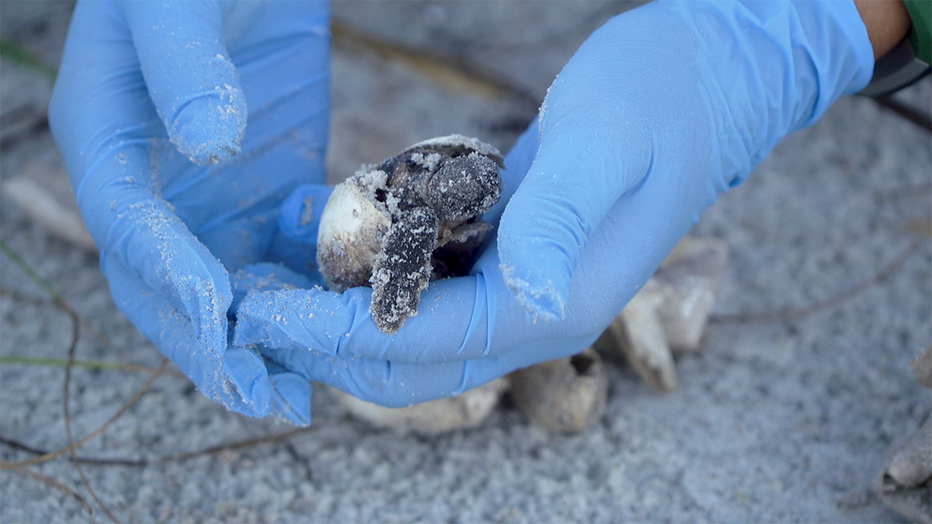
Loggerhead sea turtle hatchlings released by Clearwater Marine Aquarium (Courtesy CMA)
CMA said nearly 175 instances of disorientation were observed, but the actual number is likely much higher.
"We’ve had significantly more disorientation events this season than we documented in previous seasons, and that’s not something we want to see," Flynn said. "Artificial light from all of our properties on the beaches interferes with that, and they’re going to follow whatever is brighter thinking that is where the water is. Unfortunately, we find our hatchlings in areas that they shouldn’t be, parking lots, pools, hot tubs, in Gulf Boulevard where unfortunately they can be impacted by vehicles."
She urges people who live on the beach to change their lights to lights in the amber and red spectrums, at least during nesting season, which is May through October. She said it’s less distracting to the turtles.
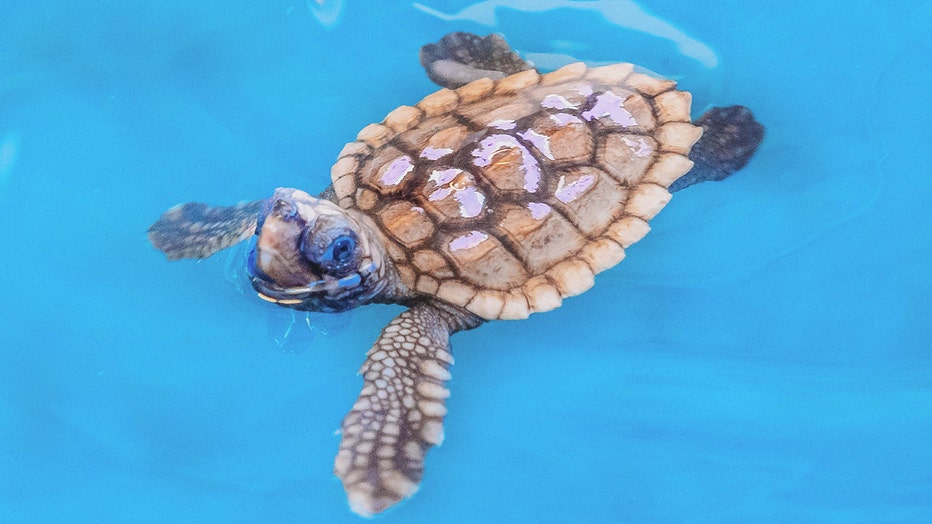
Loggerhead sea turtle hatchling rescued by Clearwater Marine Aquarium (Courtesy CMA)
Flynn said if you go for a walk on the beach at night, don’t use your phone as a light. That can disorient them too.
"We work very hard to help these hatchlings survive. We want to see this population of turtles survive so the next generation of turtles can enjoy them and watch them grow too, so we encourage people to help do their part," she said.
Flynn said if you find a sea turtle, it’s against the law to touch it, so call Florida Fish and Wildlife’s rescue hotline at 888-404-FWCC (3922).
She said it also helps the hatchlings if you fill in holes on the beach and knock down sandcastles.
Officials encourage anyone who lives near, or visits Tampa Bay area beaches to be educated about sea turtle nests and the dangers sea turtles and hatchlings face.
For more information, visit https://mission.cmaquarium.org/news/category/sea-turtles/

